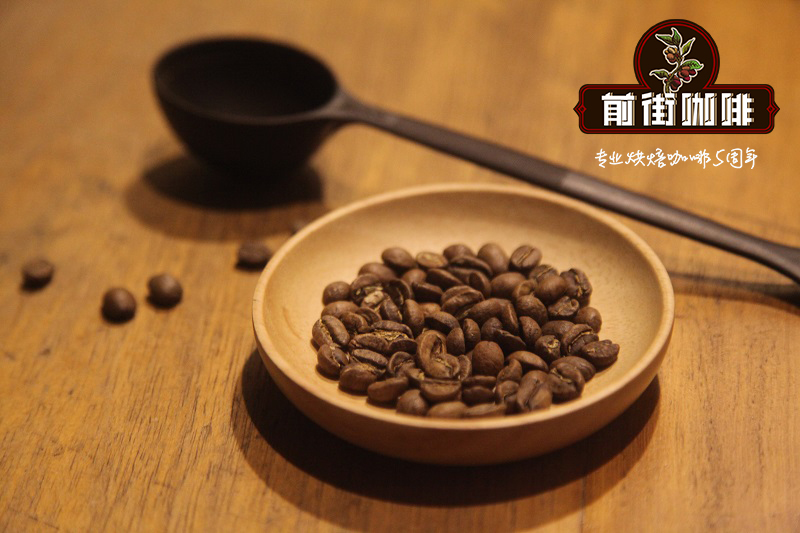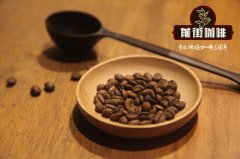Is Rwanda black coffee? a brief introduction to the taste of Rwandan coffee

Professional coffee knowledge exchange more coffee bean information please follow the coffee workshop (Wechat official account cafe_style)
Qianjie-introduction to Rwandan Coffee
Rwanda has the most interesting coffee history in East African countries. After the unfortunate genocidal civil war of the 1990s, the people of Rwanda moved forward in an increasingly high spirit, and its high-quality coffee is inextricably linked.
Rwanda is known as the Land of a Thousand Hills, so many coffees are grown at an altitude of 1700 to 2000 meters above sea level (MASL). Rwandan coffee can reach the top level in the world. They usually have a clean and bright taste, comparable to the best coffee in Central America and more balanced than Kenyan coffee, with charming sweet fruit, floral aromas and tea-like flavors.
Coffee is grown in many areas here, but most of it comes from the south and west. Many farms are located between 1700 and 2000 meters above sea level. Coffee grows along the banks of Lake Lake Kivu, from the northern part of Gisenyi to the central regions of Kibuye and Nyamasheke, and all the way to Cyangugu. Butare in the south also produces a lot of coffee. The amount of coffee grown in the north is limited, with much of it concentrated in the Rulindo area north of the capital, Kigali. Coffee production in the east is also high, but most of it grows in areas with low elevations of about 1300 meters.
After picking the coffee fruits, they are usually put into the water to remove the lighter ones. The pulp removal process usually uses a Kenyan disc crusher, which contains a classifier that can distinguish between lighter and heavier coffee beans. Lighter coffee beans are selected and sent to secondary shellers and separate low-level fermentors for grade B and C coffee. Coffee beans with high weight and density are sent to A-level coffee bean fermentors, where they will eventually be recognized as A1, A2 and A3 quality.
In short: Qianjie is a coffee research hall, happy to share the knowledge about coffee with you, we share unreservedly just to make more friends fall in love with coffee, and there will be three low-discount coffee activities every month. The reason is that Qianjie wants to make more friends drink the best coffee at the lowest price, which has been Qianjie's tenet for 6 years!
END
Important Notice :
前街咖啡 FrontStreet Coffee has moved to new addredd:
FrontStreet Coffee Address: 315,Donghua East Road,GuangZhou
Tel:020 38364473
- Prev

Rose summer extraction rose summer how to drink rose summer coffee how to share the parameters
Professional coffee knowledge exchange more coffee bean information please follow the coffee workshop (Wechat official account cafe_style) front street-90 + Panama Rose Summer Manor hand sharing this seemingly simple and ceremonial way of making coffee is loved by many coffee lovers, but want to make delicious coffee is not as simple as it looks oh ~ a good cup of hand-made coffee, dry
- Next

Brief introduction of Rwanda Coffee which Brand is good Rwanda Musiui Water washing bourbon
Professional coffee knowledge exchange more coffee bean information please follow the coffee workshop (Wechat official account cafe_style) front street-Rwanda washing bourbon introduction the Republic of Rwanda is located in East Central Africa near the equator, is a small mountainous country in Central Africa. It is bordered by Uganda in the north, Tanzania in the east, Burundi in the south and Congo in the west. 1962
Related
- Beginners will see the "Coffee pull flower" guide!
- What is the difference between ice blog purified milk and ordinary milk coffee?
- Why is the Philippines the largest producer of crops in Liberia?
- For coffee extraction, should the fine powder be retained?
- How does extracted espresso fill pressed powder? How much strength does it take to press the powder?
- How to make jasmine cold extract coffee? Is the jasmine + latte good?
- Will this little toy really make the coffee taste better? How does Lily Drip affect coffee extraction?
- Will the action of slapping the filter cup also affect coffee extraction?
- What's the difference between powder-to-water ratio and powder-to-liquid ratio?
- What is the Ethiopian local species? What does it have to do with Heirloom native species?

